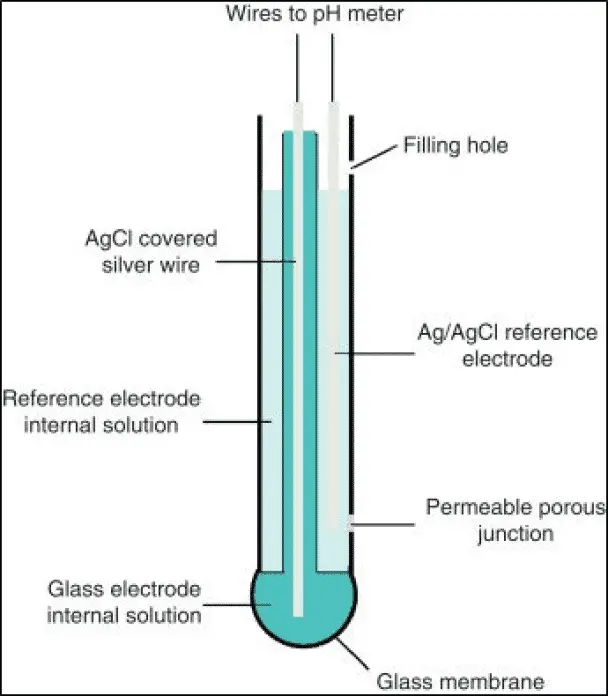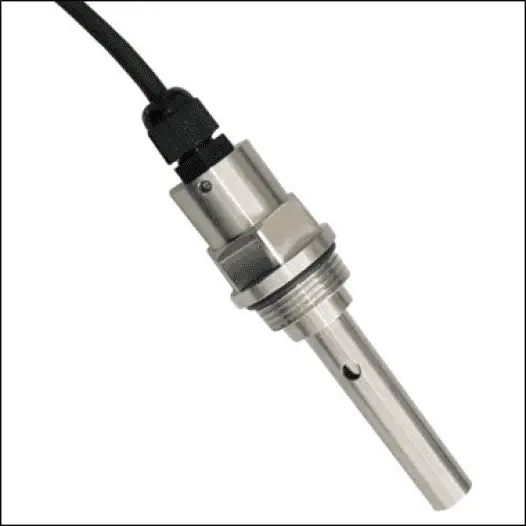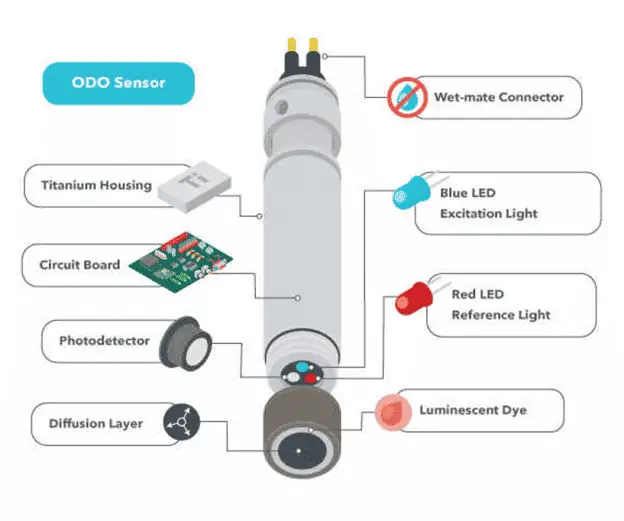In this article, we will discuss various types of sensors used in water treatment plants, like pH, conductivity, ORP, turbidity, and dissolved oxygen sensors.
The water treatment plant is present in almost all big industries. The main task of the water treatment plant is to convert waste or bad water into a usable form for either drinking or raw water for heat exchangers or cooling towers to make up water.
Measuring the quality of both inflow and outflow wastewater is essential to determine the efficiency of each process, maintain overall water quality, and ensure that the process meets the strict regulatory standards applied to them.
Maintaining water quality is the primary purpose of the water treatment plant. For maintaining the water quality, various sensors are used like pH, conductivity, ORP, turbidity, and dissolved oxygen sensors. We many times call them analyzers in industrial terms. These analyzers are the main part of the water treatment plant based on which treatment is carried out for the waste or bad water.
Water quality depends on many factors because water itself is made up of many components. So, only one or two analyzers will not be sufficient to monitor the quality of water.
The various types of Sensors or Analyzers used in water treatment plants are;
- pH Analyzer
- Conductivity Analyzer
- ORP Analyzer
- Turbidity Analyzer
- Dissolved Oxygen Analyzer
Types of Sensors used in Water Treatment Plant
1. pH Analyzer
pH stands for the potential of hydrogen ions present in any solution. It is used to specify whether the solution is acidic or basic in nature. pH is determined by basically checking the concentration of hydrogen ions and hydroxyl ions in the water. The range of pH is 0 to 14 where 0 is highly acidic and 14 is highly basic.

Drinking water and wastewater treatment are one of the most common applications where pH measurement is used. Water at the bottom of the pH scale can damage pipes and faucets and allow toxic substances to enter the water supply. If the pH is too high, it can lead to an unpleasant taste. Wastewater treatment requires controlling pH levels to ensure

optimal conditions for achieving the required chemical or microbial reactions and to carry out the process efficiently.
The pH analyzer senses the pH and the pH value is controlled by dosing NaOH and HCl in diluted forms. The dosing is done using dosing pumps. PID controllers are also used for determining the accurate dosing rate.
2. Conductivity Analyzer
The conductivity sensor is an important sensor used in the water treatment plants. The conductivity of water is a term that describes whether water can conduct electricity. The reason water conductivity is important is that you can see how many substances, chemicals, and minerals are soluble in water. The higher the level of these impurities, the higher the conductivity. Even small amounts of dissolved salts and chemicals can increase the conductivity of water.
Significant changes in water conductivity may indicate that contaminants have entered the water. It can also be a sign of a sewage leak. When various chemicals and salts dissolve in water, they turn into negatively charged and positively charged ions. Positively charged ions that can affect water include potassium, magnesium, and sodium.

On the other hand, negatively charged ions include carbonates, chlorides, and sulfates. High amounts of substances such as sulphate can lead to scale deposits that can damage boilers and other industrial equipment. For environmental and industrial applications, measuring the conductivity of water is a very simple and inexpensive way to determine the number of ions present in water.
Unit of conductivity is Siemens/meter or microSiemens/centimeter
Various types of Conductivity Analyzers are available. Methods like Contacting Conductivity Measurement and Inductive Conductivity Measurement are used. In plants, conductivity is controlled by demineralized beds commonly known as DM beds. They remove the minerals present in the water and make it low conductivity water.
3. ORP Analyzer
Oxidation-Reduction Potential (ORP) is a measure of the degree of oxidation or reduction of a liquid. For example, water can be moderately oxidative (such as carbonated water), highly oxidative (such as chlorinated water or hydrogen peroxide), or reducing (such as an environment in which anaerobic microorganisms are active).
In short, ORP is a measure of water purity and the ability to break down pollutants. This measurement has many uses like checking the health and safety of drinking water or monitoring the liquid for compatibility with anaerobic microbial processes. ORP increases due to an increase in microbial activities. Hence it is necessary to maintain the microbes present in the water.
ORP is maintained by dosing chlorine. Dosing chlorine in water requires a special system that is under vacuum. Many microbes do not get affected by chlorine. So, we need to dose Sodium Metabisulfite Solutions for such microbes. But there should be a time gap between both dosing cycles. Because dosing both chlorine and Sodium Metabisulfite Solutions at the same time will result in a neutralization effect.
4. Turbidity Analyzer
Turbidity refers to the uncleanliness of water caused by small particles and suspended solids. These particles are so small that they are invisible to the naked eye. Turbidity is technically called a measure of water transparency.
There are three ways to remove unwanted particles from water: biological treatment, physical/chemical treatment, or a combination of both. The biological treatment uses organic substances to purify water. Physical/chemical treatment focuses on removing solids by applying unit operations such as sieving, clarification, flotation, and filtration in combination with chemicals. However, for some water treatment plants, we see the benefits of both methods. Here we choose to use combination therapies to take advantage of each treatment.
High turbidity means that there are many small particles in the water. Low turbidity indicates that the water contains fewer particles and is cleaner. As with industrial wastewater, the treatment process aims for low turbidity, with the aim of emission compliance or reuse. The presence of high turbidity may indicate that the wastewater treatment system needs attention.
The unit of turbidity is a nephelometer. Turbidity is removed by the use of filters in plants. Turbidity analyzers measure the turbidity using the principle of nephelometry
5. Dissolved Oxygen Analyzer
Dissolved oxygen (DO) is the most important indicator of water quality. It is one of the most important things for the survival of fish and other aquatic organisms. Oxygen is introduced into the water as a by-product of photosynthesis by aquatic plants. If the dissolved oxygen is too low in the water, then the fish and other aquatic organisms will not survive.

The colder the water becomes, the more oxygen it starts absorbing. The warmer the water gets, the less oxygen it can dissolve. Salt is also an important factor in determining the amount of oxygen that a body of water can take in itself. Fresh water can always absorb more oxygen than salt water.
Various Dissolved Oxygen Analyzers are available like Electrochemical Dissolved Oxygen Sensors and Optical Dissolved Analyzer